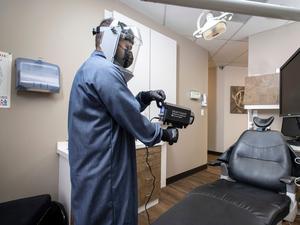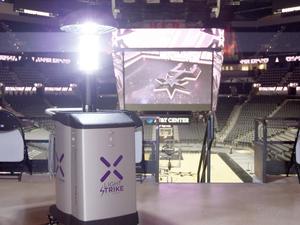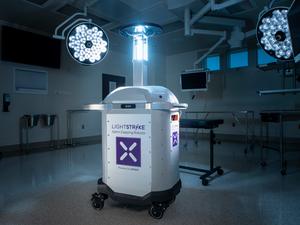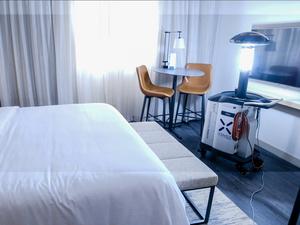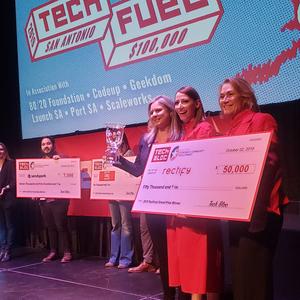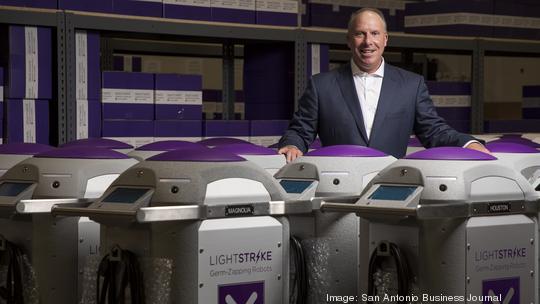
Not all of the soldiers who have manned the front lines to help eradicate the virus that’s unleashed Covid-19 are human.
Across the world, a wide array of businesses, institutions and venues have enlisted Xenex Disinfection Services’ germ-zapping robots to combat SARS-CoV-2. As the technology behind that arsenal continues to evolve, it could become an even more lethal threat to future pandemics.
The San Antonio-based creator of these non-military machines, which use pulsed xenon ultraviolet light to disinfect everything from hospital rooms to sports stadiums, has ramped up production to meet a spike in demand. It’s working to get its LightStrike robots delivered in as little as a week to help combat the ongoing health crisis.
“We're continuing to build robots as fast as we can,” Xenex CEO Morris Miller said.
Miller, a San Antonio native and the son of a physician, has had diverse career, including launching a legal publishing company and cofounding Rackspace Hosting (now Rackspace Technology).
In 2012, Miller became CEO of Xenex and before the year was up made the call to move the fledgling company’s headquarters from Austin to San Antonio because he knew there was an infrastructure in the Alamo City that could propel its mission.
“People underestimate the amount of technical talent that we have here. They underestimate the quality of the schools and universities that we have here,” Miller said.
Xenex has built on that foundation. More than 900 hospitals now use the company's robots, along with hotels, the San Antonio International Airport, and a number of NBA and NFL facilities, where they have performed some 30 million disinfection cycles to date.
In the midst of the pandemic, Xenex unveiled the sixth version of its LightStrike device, which Miller said is faster, smarter and more durable. Already, the 12-year-old company is working on the seventh edition of its germ-zapping robot.
“That is a very rapid pace of innovation for health care, which, as technology people, we like,” Miller said.
That pace is critical, however, as Miller insists that health care facilities alone need some 150,000 of these robots. Then there are the schools, he says, that could use more help keeping students safe.
In late 2020, Xenex awarded a $20 million contract to New York-based Astronics to help manufacture its germ-zapping robots. A few months later, the company expanded its portfolio, introducing a high-powered, hand-held device, called Deactivate, that was designed to quickly disinfect surfaces in more confined spaces.
As for Miller, there are other interests beyond the robot business. In 2016 he helped launch Tectonic Ventures to invest in and act as an advisor to startup and established technology companies.
That investment work continues, but it’s clear he still has plenty of runway left with Xenex. And part of that motivation is a drive to continue to advance Xenex’s technology. Miller is convinced that, with more of its machines in circulation, the San Antonio company can lessen the threat of the next global health crisis.
“Let's get the robots out,” he said. “We might be able to stop the next pandemic before it starts.”
